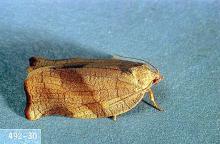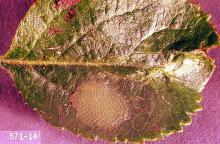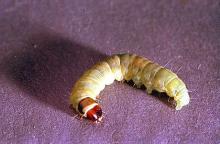Includes
Fruittree leafroller (Archips argyrospila)
Oblique-banded leafroller (Choristoneura rosaceana)
Pest description and damage The leafroller pests can be divided into single-generation moths, such as the fruit tree leafroller and the European leafroller, and two-generation moths, such as the oblique-banded leafroller and pandemis leafroller. The larvae are mostly green caterpillars with a light brown to black head. Mature larvae range from 0.75 to 1.0 inch in length. Adults have distinctive bands or mottling on the wings but are rarely seen. The tortricid moth larvae are noted for their violent backward wriggling-a means of escape. Newly hatched larvae also may work into blossoms. The larvae web the leaves and flowers together beginning in late April, and then feed on the developing fruit or flowers. Larvae may also feed on the surface of ornamental fruits or berries. Adult moths are typically over 0.75 inch in wingspan.
For biology, life history, monitoring and management
See:
Cherry, flowering (Prunus)-Oblique-banded leafroller
See "Leafroller" or "Caterpillars" in:
Management-chemical control
See Table 3 in:





